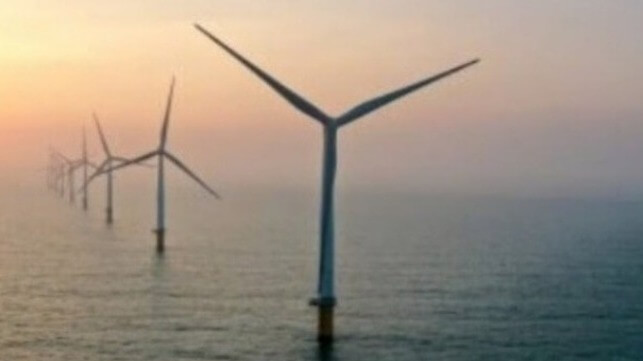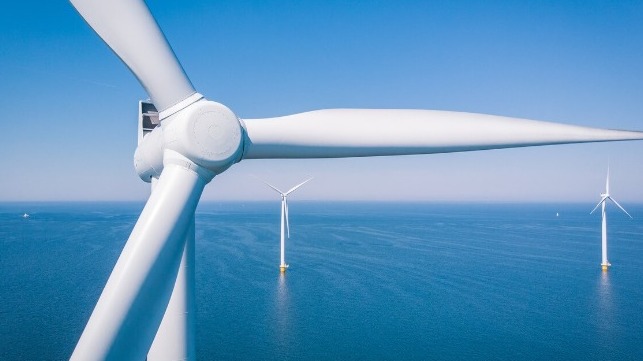BOEM Releases Final Environmental Statement for Offshore Maryland Wind Farm

The Biden administration is continuing to move forward aggressively with its efforts for the offshore wind energy industry. Plans for the first large-scale wind farm off Maryland cleared a key hurdle in the approval process coming as the industry continues to face challenges and work remains suspended after a blade failure at one of the first projects.
The Bureau of Ocean Energy Management (BOEM) announced on July 29 the availability of its final Environmental Impact Statement (EIS) for a proposed wind project offshore Maryland to be developed by US Wind. This comes just before the tenth anniversary of the August 2014 competitive lease sale which resulted in US Wind receiving a lease for nearly 47,000 acres in the federal waters 10 nautical miles offshore Ocean City, Maryland.
BOEM highlights it held three public scoping meetings in June 2022 to solicit public input on the environmental review process and hosted two in-person and two virtual public meetings in October 2023 to gather feedback on a draft of the EIS. The next step in the process is for BOEM to issue a Record of Decision on US Wind’s Construction and Operations Plan, which is expected in September 2024. According to the company, other cooperating federal agencies and state agencies are expected to render favorable decisions by the end of 2024.
“We are well on our way to putting Maryland’s offshore wind goals that much closer to reality,” said Jeff Grybowski, US Wind CEO. “We applaud BOEM for the comprehensive and thorough review of our federal permit application. We are now one step closer to securing all our federal permits by the end of this year, and look forward to the day we can get steel in the water.”
US Wind is seeking approval for its proposed Maryland offshore wind project, which includes three planned phases. Two of those phases, MarWin and Momentum Wind, have received offshore renewable energy certificates from the State of Maryland. If approved, the project proposes to install up to 114 turbines, up to four offshore substation platforms, one meteorological tower, and up to four corridors for offshore export cables, which would make landfall in Delaware Seashore State Park. The total project would have a capacity between 1.1 and 2.2 GW.
The approval however comes as Vineyard Wind 1 continues to have problems. Nantucket town officials reported late on Monday, July 29, that additional parts of the failed turbine blade fell from the turbine with some large pieces entering the water column, while smaller pieces floated on the surface and some pieces landed on the turbine platform. They are cautioning that “small, popcorn-sized pieces of foam, with some larger pieces and limited fiberglass fragments possibly mixed in,” are expected to reach the island’s southern beaches.
GE Vernova is blaming a manufacturing defect for causing the massive blade to fracture in mid-July. US regulators ordered the wind farm which is still under construction to suspend all operations for a safety review. GE Vernova is said it will need to inspect the approximately 150 blades for its 13 MW Halliade-X turbines manufactured at a plant in Canada. A large portion of the blades were going to Vineyard Wind 1 which is among the first to use this model of turbine.
The Department of the Interior however is continuing to push forward with its plans. On August 14, BOEM will hold an offshore wind lease sale for the Central Atlantic, auctioning areas offshore Delaware, Maryland, and Virginia that could generate up to 6.3 gigawatts of energy to power up to 2.2 million homes. The Department also announced a schedule to hold up to 12 additional lease sales through 2028 but recently canceled the planned auction for the Gulf of Mexico reporting a lack of interest. One company made an unsolicited offer which will be reviewed. Since the start of the Biden-Harris administration, the Department of the Interior reports it has approved the nation's first nine commercial-scale offshore wind projects with a combined capacity of more than 13 gigawatts.
EU Protests Taiwan’s Local Content Rules for Offshore Wind Farms

The European Union has filed a formal challenge to a longstanding Taiwanese directive that requires offshore wind developers to source most of their components locally. Last week, the EU requested for dispute settlement consultations at the World Trade Organization (WTO).
In 2021, Taiwan’s Ministry of Economic Affairs published a localization policy to spur development of the domestic offshore wind supply chain. The policy applied during Taiwan’s Round 3 offshore wind tenders, with the first phase completed in December 2022. As per the local requirement rules, at least 60 percent of parts used in offshore wind farm development must be sourced locally, except products and services that the Taiwanese supply chain cannot readily provide.
However, the EU argues that the localization criteria is inconsistent with WTO regulations, which require that member countries such as Taiwan should not discriminate against imported goods and services.
The dispute settlement consultations that the EU is requesting are the first step in WTO dispute settlement proceedings. If they do not lead to a satisfactory solution within 60 days, the EU can request the WTO to set up a panel to rule on the matter.
Taiwan has responded that it will participate in the talks with the EU in resolving the trade dispute. “Our foreign mission has been tasked with discussing the concerns over the policy with the EU. Again, the Minister of Economic Affairs J.W Kuo had already said that Taiwan would relax its local content criteria for windfarm projects,” said the Ministry of Economic Affairs.
Taiwan has defended the policy, arguing that it is critical to its national and energy security. In addition, it is meant to encourage foreign developers to cooperate with domestic players, especially in the field of research and development.
No comments:
Post a Comment